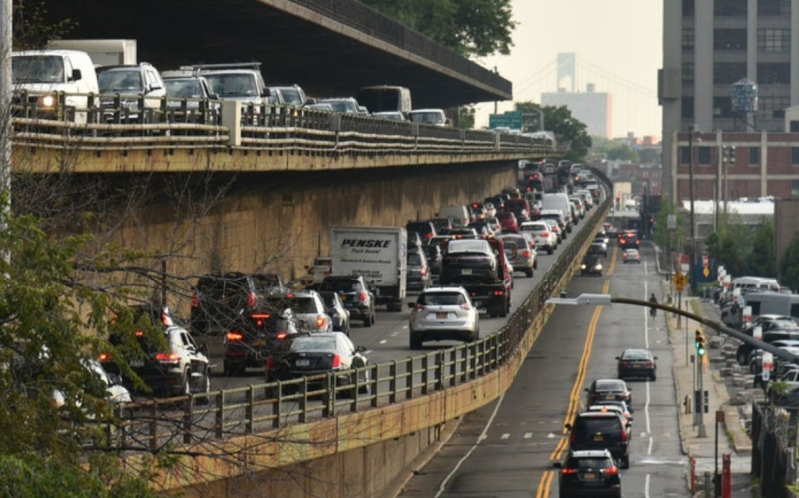Harvard Study: Car Pollution in NYC Claims 1,400 Lives, Billions in Costs

Researchers say that the New York City metro area suffers roughly 1,400 premature deaths every year, and loses billions in health costs, strictly because of pollution caused by tens of thousands of trucks, cars and buses that traverse the area — the highest death toll in the northeast.
The Harvard and the University of North Carolina study of 12 states plus the District of Columbia found that New York state suffered 2,024 premature deaths in 2016 (the last year for which statistics are available) and the New York City metro area logged 1,404 deaths specifically linked to high amounts of fine particulate matter (PM2.5) and ozone (O3) — pollutants that contribute to poor air quality and lead to health problems like respiratory and cardiovascular diseases.
Pennsylvania was second with 1,270 premature deaths, according to the study, which is being released on Tuesday.
The study, which is part of a multi-university initiative called the Transportation, Equity, Climate and Health Project, should be a wake-up call for new curbs on gas-guzzling vehicles.
“It is my hope that the results from this study will help demonstrate how serious air pollution from vehicles is to people living not only near high-traffic areas, but also those living downwind of them,” said Calvin Arter, a graduate research assistant at UNC-Chapel Hill and lead author of the study, which was published in Environmental Research Letters. “And in doing so, provide the impetus for a collaborative approach to reducing the health impacts associated with on-road transportation-related air pollution.”
And not only does vehicle pollution cost people their lives, but it’s also a burden financially. Health damages as a result of traffic emissions cost New York a whopping $21 billion in 2016, the researchers said.
And specifically, pollutants from buses in the New York City metro area had the largest marginal health impacts across all vehicle types and pollutants, costing about $4 million for every ton of particulate matter emitted, according to the study.
“The research confirms that recent efforts to electrify the bus fleet in New York City will have large health benefits — or, the biggest bang for the buck. The cross-border impacts underscore the need for region wide action to curb transportation emissions,” said Saravanan Arunachalam, research professor and deputy director of the UNC Institute for the Environment. “What makes this study different from previous studies is that it connects the dots between where the pollution happens, and where the premature deaths occur.”
Efforts to combat pollution are slow; the MTA announced earlier this month that it would increase its order for new electric buses from 45 to 60 this year, but it’s still far from meeting its goal of a zero-emissions bus fleet by 2040. And Mayor de Blasio has pledged to entirely electrify the city’s school bus fleet by 2025.
The study didn’t narrow in on areas small enough to differentiate between damages caused by pollution near highways like the Brooklyn-Queens Expressway or Cross Bronx Expressway, but the experts say it’s regularly much higher. And other studies have already proved that — asthma rates in the Bronx are among the worst in the nation; and its mostly Black and Latino communities suffered the highest death rate from COVID-19 in the city, in part due to the poor air quality that makes people more vulnerable to respiratory diseases. Those who live near highways are more susceptible to ultrafine particles, which can cause even more damage than fine particulate matter.
“Near roadways, exposures tend to be a lot higher from PM2.5 and other pollutants, ultrafine,” said Jonathan Buonocore, a research scientist at the Harvard T.H. Chan School of Public Health. “It has an easier time getting deeper into the lung and is even more harmful.”




